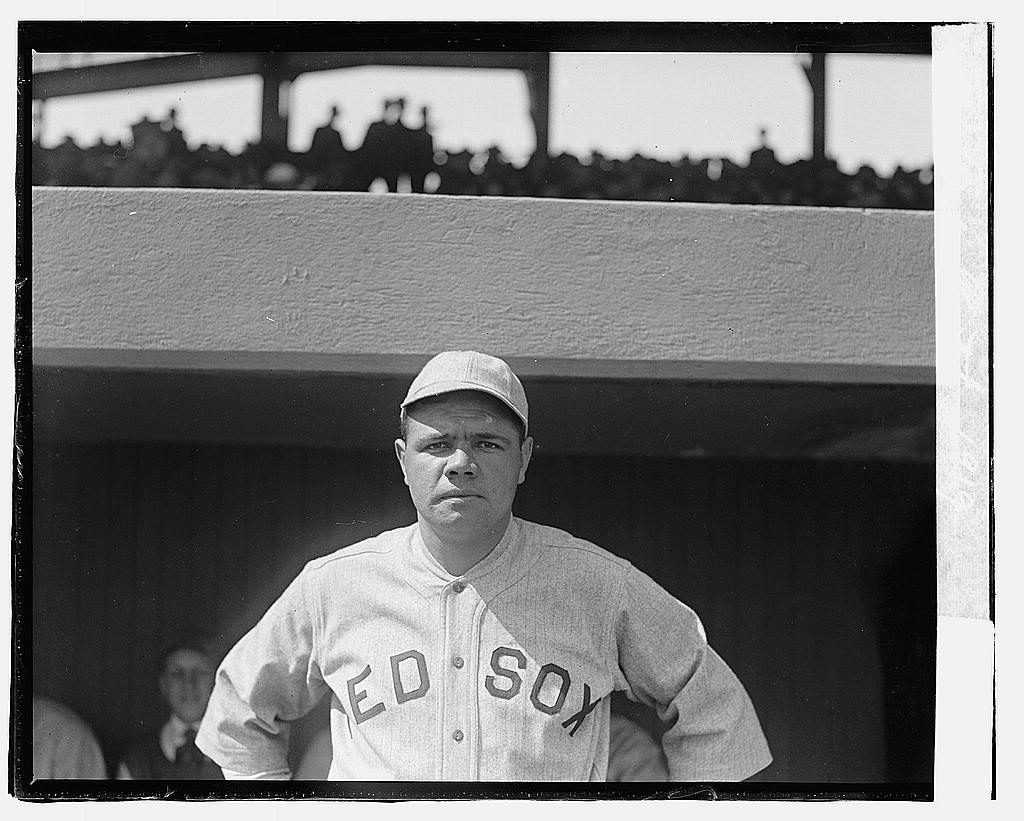Last Updated: January 6th, 2024 by Jake Cain
Let’s imagine together for a moment.
If Babe Ruth hopped in a time machine and played in today’s MLB, how would he do?
According to the video below, he “wouldn’t last 2 seconds.” Take a look:
Babe Ruth’s legendary status in baseball is unchallenged, but how would he fare in the contemporary game with its hard-throwing pitchers and high-tech analysis? It’s fascinating to ponder if the Sultan of Swat could swing his bat with the same authority against today’s pitchers, especially considering the evolution in measuring pitch speeds.
A Century of Speed
The history of clocking pitch velocity, as recounted by Matt Brown in an enlightening essay (Baseball History Comes Alive), traces back to 1912. The quest began with a military chronograph, a device originally designed for measuring bullet speed. Its adaptation to baseball allowed for Walter Johnson and Nap Rucker’s fastballs to be recorded at 84 and 77 mph respectively. Yet, the device measured the speed after the ball had traveled 15 feet, not at release, leaving room for speculation about its true velocity.
By 1914, the pursuit to capture a pitcher’s speed grew more creative – Johnson’s fastball was compared to the velocity of a motorcycle, clocking in at an impressive 99.7 mph. The accuracy of such tests was debatable, but they illustrated baseball’s enduring fascination with speed. Fast forward to 1946, and Bob Feller used a more advanced army chronograph to register a fastball of 98.6 mph, a number closer to the speeds we recognize today.
Here’s a fascinating look at how they measured Feller’s speed:
The Radar Gun Revolution
The 1970s marked a turning point when baseball coach and former major leaguer Danny Litwhiler innovated the use of police radar guns to measure pitch speeds. It was a game-changer and laid the groundwork for the radar guns we see in every MLB game today. By the 1980s, radar guns had become a staple in baseball, allowing a precise and consistent measure of a pitch’s velocity.
Advancements in technology have continued to reshape how we view pitching. Modern radar systems and high-speed cameras now offer granular detail on every pitch thrown in a game, from velocity to spin rate.
Babe Ruth vs. Today’s Flamethrowers
Babe Ruth played in an era before radar guns, facing pitchers like Johnson, whose fastballs were undoubtedly swift but not documented with the precision we have now. If Ruth stepped up to bat today, he would confront a league where the average fastball hovers around 94 mph, as documented by J.J. Cooper’s Baseball America article detailing how radar gun technology and subsequent recalibration have shown a steady increase in pitch speeds over the years.
Ruth was undoubtedly adaptable, mastering the pitchers of his time with a combination of instinct, power, and sheer batting skill. Facing today’s pitchers would be a new challenge altogether, but given Ruth’s track record, it’s not outlandish to think he’d find a way to succeed, even if it required adjusting his legendary swing.
The Verdict
The question of how Babe Ruth would perform today ultimately bridges the gap between baseball’s past and present. It’s a testament to the game’s reverence for its history and the respect for the evolution of its play. Pitchers may be throwing harder than ever, but Ruth’s place in baseball lore remains solid.
He was a once-in-a-lifetime talent who, even now, prompts us to dream about what could have been if he faced off against the titans of the mound in the modern era.
For my 2 cents – I think the Babe would struggle for a couple of weeks, then he’d make the adjustment and start to rake like it’s 1927.


Babe Ruth was an extraordinary talented ball player and achieved what no player before him and very few after him were able to duplicate. There is no doubt given his size, strength and natural ability combined with today’s training and weight control techniques that he would be a dominant player in the present time.